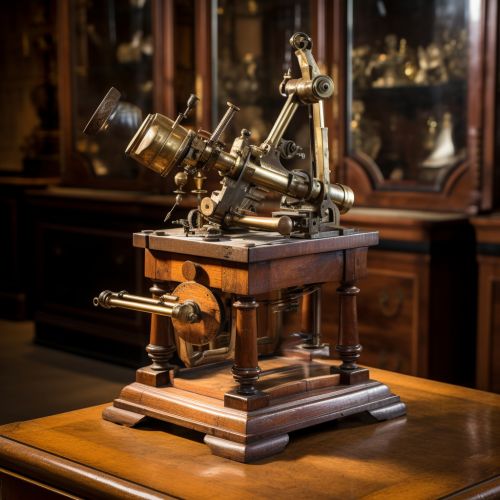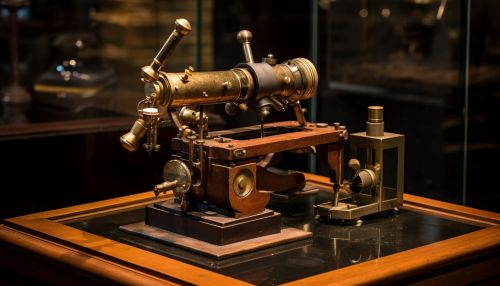Germ theory
Introduction
The Germ theory is a fundamental principle in the field of medical microbiology, postulating that microorganisms, also known as germs, are the root cause of many diseases. This theory has revolutionized the understanding of disease causation, leading to significant advancements in the prevention, diagnosis, and treatment of diseases.
Historical Background
The concept of germ theory has its roots in the early observations and hypotheses of many scientists and physicians. The initial idea that invisible living entities could cause disease dates back to the ancient Roman scholar Varro, who warned against locating homes near swamps "because there are bred certain minute creatures which cannot be seen by the eyes, which float in the air and enter the body through the mouth and nose and there cause serious diseases."
In the 16th and 17th centuries, the invention of the microscope opened a new world of microorganisms. Leeuwenhoek, using his handcrafted microscopes, was the first to observe and describe microorganisms, which he called "animalcules", including bacteria, yeast, and protozoa.


Development of the Germ Theory
The development of the germ theory of disease in the 19th century was a significant breakthrough in medical science. The work of several scientists, including Pasteur, Koch, and Lister, was instrumental in establishing and validating this theory.
Louis Pasteur
Louis Pasteur, a French chemist and microbiologist, is often credited with the formal proposal of the germ theory. His experiments demonstrated that microorganisms are present in the air and can contaminate sterile solutions, leading to fermentation or disease. Pasteur's work disproved the prevailing theory of spontaneous generation, which postulated that life could arise spontaneously from non-living matter.
Robert Koch
Robert Koch, a German physician and microbiologist, further developed the germ theory by establishing a systematic method to prove that a specific germ causes a specific disease. His postulates are still used today as a standard for identifying the microbial cause of diseases.
Joseph Lister
Joseph Lister, a British surgeon, applied the principles of the germ theory to surgery, introducing antiseptic techniques in the operating room. His work significantly reduced the rate of post-surgical infections, demonstrating the practical application of the germ theory in medicine.
Impact on Medicine and Public Health
The acceptance of the germ theory had profound implications on medicine and public health. It led to the development of antibiotics, vaccines, and other therapeutic strategies to prevent and treat infectious diseases. It also prompted the implementation of public health measures, such as sanitation, sterilization, and personal hygiene, to control the spread of infectious diseases.
Criticisms and Controversies
Despite its wide acceptance, the germ theory has been subject to criticism and controversy. Some critics argue that it overemphasizes the role of microorganisms in disease causation, neglecting other factors such as host immunity and environmental conditions. Others question the validity of Koch's postulates in the context of modern understanding of infectious diseases, particularly those caused by viruses and prions.
Current Understanding and Future Directions
Today, the germ theory remains a cornerstone of medical microbiology. However, with the advent of advanced technologies and the emergence of new infectious agents, our understanding of the relationship between germs and disease continues to evolve. The discovery of the human microbiome, the collective genome of the microorganisms living in and on our bodies, has challenged the traditional view of germs as mere disease-causing agents, highlighting their crucial role in maintaining our health and well-being.
